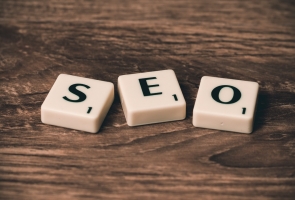It could be about any of these things, but now it’s time to look at this a bit more realistically. In a vast majority of cases, e-commerce sites don’t fail over products or fulfillment. They fail because of poor marketing. As the head of an agency that deals primarily with written marketing content, I see this all the time. “What are we doing wrong?” is a question we get a lot at BeezContent.
I designed this post to answer the question as succinctly as possible and also provide a road map for your next content strategy. Whether you’ve already thrown in the towel on an existing e-comm and have decided to start from scratch or need to figure out how to move the thousands of dollars of inventory sitting in your garage, keep reading.
With the right e-commerce content strategy in place, you will be able to move your business in the direction of success. With that in mind, let’s round up the usual suspects and see how we can help you redirect your efforts in a more successful direction.
You Didn’t Properly Target Your Marketing
Forget about who you want to reach with your marketing. Who will want what you’re selling? Have you invested the time in researching current market trends? Are you marketing to the right demographic(s)? Sometimes the people we anticipate being most receptive to our marketing efforts are not the ones we should be targeting.
Have a look at your competition and take note of a few things. For starters, what social media channels are they using? Who is engaging with their content on those channels? How does your competition’s audience compare to yours? Take note of what they’re doing and who is responding, and then start realigning your marketing around people who are likely to want what you’re selling.
Your Product Descriptions Were Too Basic
This is another area where many e-comms fall short. Either the descriptions are too basic or too sloppy to get anyone’s attention. Unless you are selling something like your own art or handmade goods that can’t be had anywhere else, the chances are buyers have choices when it comes to getting what you’re selling.
Your product descriptions can go a long way toward answering the question of why people should buy from you as opposed to storefront X. Good product descriptions can also heighten the perceived value of the product, making fewer people balk at your prices and seriously consider hitting that all-important “add to cart” button right then and there.
You Didn’t Utilize Your E-comm’s Blog
Most marketers either don’t recognize the value of keeping a blog for their e-comm, or they let their blogging efforts grow lax for a variety of reasons. The simple fact of the matter is that your blog is a vital element of your SEO strategy. There are few easier routes to higher rankings than a well-written and regularly updated blog with good SEO practices built-in.
The biggest objection I hear to this is the time it takes to maintain. This is why I recommend working with an established copywriting company, like BeezContent, to help keep things on track. If you’re worried about the expense, ask yourself what costs more: establishing a long-term plan that keeps your rankings high and funnels traffic to your e-comm or the diminishing return on investment on a failing store. It’s time to start thinking long-term.
Your SEO Strategy Was Incomplete
Since I mentioned SEO a minute ago, let’s take a closer look at it. What do you do when developing content to ensure good search engine optimization? What are you doing to keep your store climbing in the ranks?
SEO is a much more far-reaching effort than many marketers realize. It encompasses written content, visuals, site presentation, page load times, and much more. For the technical stuff, I recommend doing regular SEO audits. To ensure that your rankings continue to rise, I suggest being consistent in the quality of your content, especially your written content. This will, in point of fact, lead to consistently high rankings.
Your Content Strategy Had Gaps, Too
What are you producing for support content? Do you have a good email list? If so, how often are you dropping email blasts? Are you announcing new product lines with press releases? Does your e-comm produce a newsletter? How are you promoting on social media? Not every content type is going to benefit every e-comm, but how do you know until you start testing the waters?
Developing a Real Success Strategy
On the heels of all the rest of my comments, I want to offer a few concrete solutions to the issues you’ve been having with your e-comm. Content development is an ongoing process. It’s a time-sensitive process and one that can, and will, usurp a lot of time and attention. How much time do you have to devote to it?
The support content that promotes your products is every bit as important as the products themselves. It doesn’t matter how much demand exists for what you’re selling. What matters is who proves to be best at marketing it. With a little help and direction, I think you will find it easier to keep up with content development and position your e-comm for success. Good content increases your visibility, your authority, and the perceived value of the things you sell.
Working with a professional copywriting agency is a smart, practical, and cost-effective move and one that I hope you will consider as you ponder the reasons why your efforts up to now have failed to produce the results you wanted. We welcome the opportunity to chat with you and develop an effective e-commerce content strategy that sets your next e-commerce project up for success.




